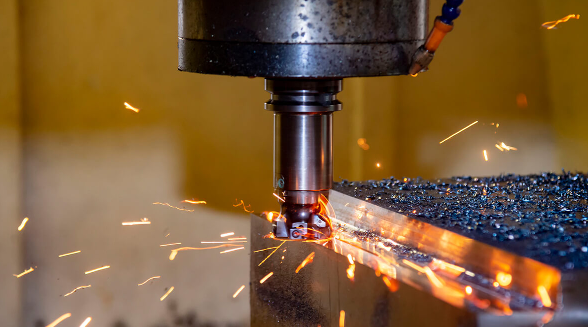Machining or metal cutting is one of the secondary manufacturing processes by which excess material is gradually removed from preformed blanks to obtain the desired shape, size, and finish. There are more processes to meet the basic requirements of machining. This kind of process can be roughly divided into conventional machining process, abrasive cutting process, micro precision machining process and non-traditional machining process. There are two common processes in the machining process: rough machining and finish machining. The differences between roughing and finishing in CNC machining will be described in detail below.

Roughing and Finishing in CNC Machining
All these are reduced material manufacturing processes, which means that the material is removed layer by layer from the solid workpiece to obtain the required three-dimensional features; However, they follow different material removal principles, so they have different capabilities in machinable materials, cutting rates, surface quality, productivity and cost. Most NTM processes and micro precision machining processes are not suitable for removing large volume materials; Instead, they can generate high precision fine features.
According to the required characteristics, a large amount of material can be quickly removed from the workpiece. This step adopts higher feed speed and cutting depth, so as to obtain high cutting rate. This step is called rough cutting or rough machining. It does not provide good surface finish and tight tolerances. After rough cutting, perform fine cutting or finishing to improve surface finish, dimensional accuracy and tolerance level. Very low feed rates and cutting depths are used here. Therefore, the cutting rate in the finishing process is reduced, but the surface quality is improved.
Difference Between Rough Machining and Finish Machining
1. The purpose of rough machining is different from that of finish machining: Rough machining is used to rapidly endow the part with basic shape according to the required features, and the surface roughness of the part is not an important factor at this time; On the contrary, the ultimate goal of rough machining is to remove unnecessary materials to the greatest extent. On the contrary, finish machining is carried out to improve the surface finish, dimensional accuracy and tolerance of the required features. When the finish machining is passed, the cutting rate is not important.
2. Surface finish and dimensional accuracy: Due to the feed speed, scallop marks or feed marks exist on the finish machined surface in every traditional machining process. This serrated fan-shaped mark will lead to the main surface roughness. In addition to the tool geometry, the surface roughness also depends directly on the feed rate. Higher feed rates will result in poor surface finish.
Higher cutting depth also tends to reduce surface finish and machining accuracy. In rough machining, higher feed rate and cutting depth are used, so poor surface finish is obtained. It also does not provide high dimensional accuracy and tight tolerances. On the other hand, due to the very low feed and cutting depth, finishing can improve the finishing, accuracy and tolerance.
3. Use of old tools: The edge of the old tool may not be so sharp (i.e., the tip radius and the tip radius are large), because it has been worn during processing. The sharpness of the edges and nose limits the surface finish that can be achieved in the process. Sharp edges cannot withstand high chip loads, but better finish and accuracy must be achieved.
Therefore, old tools can be used in rough machining without obvious problems because surface quality is not important. However, sharp tools shall be used in the finishing process to obtain better finish, accuracy and tolerance. The feed and cut depth are kept low here, so there is no detectable problem of chip load in terms of tool breakage or edge breakage.
Browse the full text to find out the differences between rough machining and finish machining in CNC machining. The more intuitive differences between the two machining processes have different processing purposes. Rough machining is mainly to give the parts the basic shape to be machined, while finish machining is mainly to improve the surface finish and dimensional accuracy required by the parts.